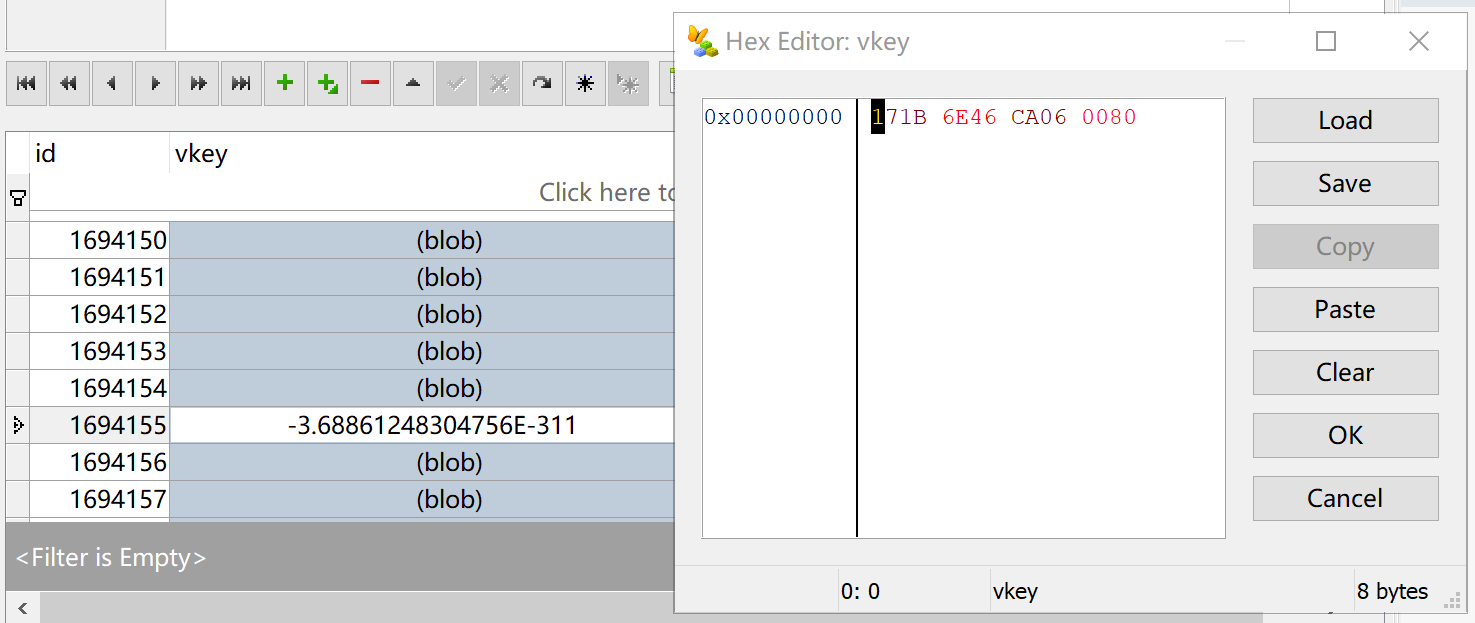你们信么,我误打误撞把问题解决了!
sqlite3_column_value 可以直接获取二进制数据,我直接从地址里获取数据了,获取到了如图所示的数据:(部分字节做了一下 & 255 操作)

根据右边那一列标记来确定数据的位置,整数就在24-31字节,“浮点数”就在16-23字节,此问题完美解决,也谢谢各位回答的朋友了。
代码奉上:
char *key = NULL;
int i = 0;
key = sqlite3_column_value(stat, k);
if ((key[38] & 255) == 2) {
for (i = 23; i >= 16; --i) {
output = key[i] & 255;
if (output > 15) {
printf("%x", output);
}
else {
printf("0%x", output);
}
}
}
else {
for (i = 31; i >= 24; --i) {
output = key[i] & 255;
if (output > 15) {
printf("%x ", output);
}
else {
printf("0%x ", output);
}
}
}
具体稳定性还有待观察,但是这是我目前能想到的唯一思路了。而且,对于 sqlite3_column_value 返回的数据结构我还尚不熟悉,熟悉后可能会有更高效的写法。
========== 2019-11-15 更新 ==========
sqlite3_column_value 获取到的数据会受到sqlite.c版本影响,之前的代码是基于3.7.9写的,后来我将sqlite更新到3.29.0后,数据的位置变成了0-7字节,不区分整数型与浮点数型了。但是如果字段值本身是null,该处内存会保留上一条记录的数据,这会引起一些bug。好在8号字节有个标记,4和8为正常,1为异常的null(上一条数据的值),做下兼容判断就好。
key = (char *) sqlite3_column_value(stmt, 1);
if ((key[8] & 255) == 1) {
// null,直接跳过
continue;
}
for (i = 7; i >= 0; --i) {
valueNum = key[i] & 255;
if (valueNum > 15) {
_snprintf(value, 32, "%x", valueNum);
}
else {
_snprintf(value, 32, "0%x", valueNum);
}
strcat(record, value);
}


